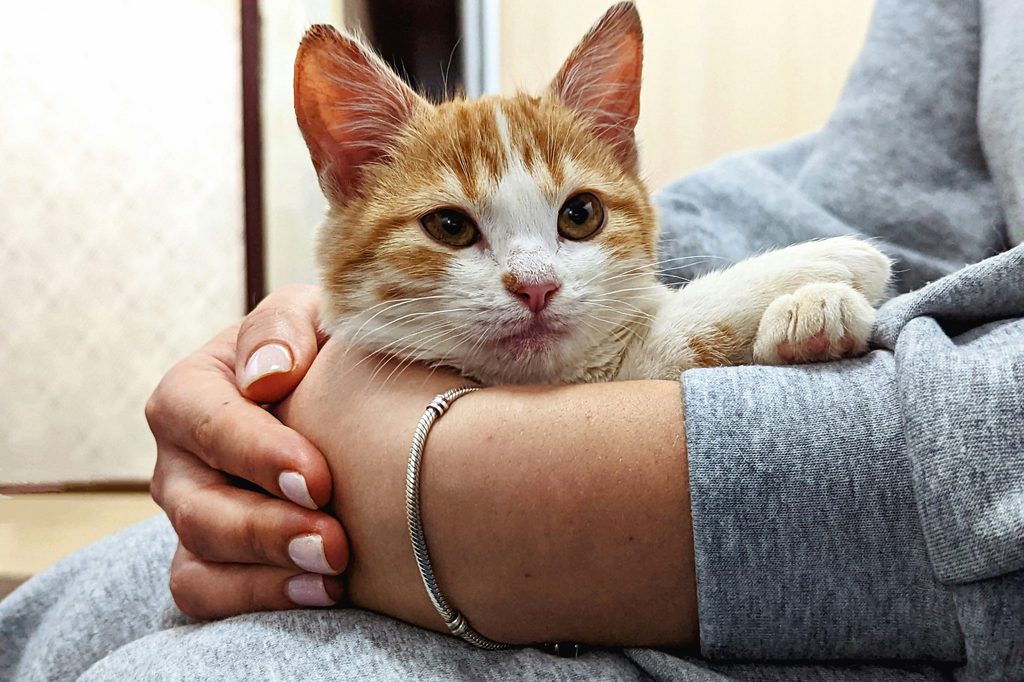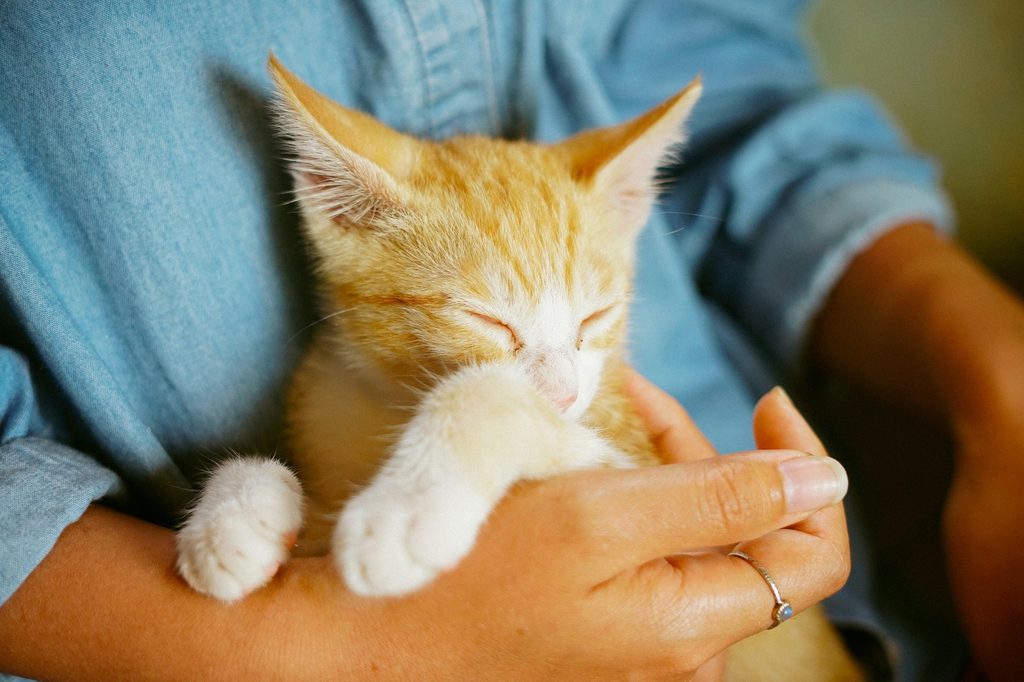Just like people, cats have their own preferences and personalities that make them one of a kind. Some are more outgoing, while others are shy and reserved. Many felines have a favorite cat toy, food, or person, and all cats have an attitude that simply can’t be replicated. Cats also differ when it comes to affection and handling, so it can be tricky to know how to approach picking up a cat.
Luckily, we’re here to help you learn how to pick up a cat in a way that’s stress free for both of you. With just a little thoughtfulness, you’ll be able to handle your four-legged friend with ease and confidence whenever you need to. Not only will this come in handy before vet appointments and using the cat carrier, but it could potentially help your cat get more comfortable with affection and cuddling, too!
Do cats like to be held?

Although this question doesn’t have a simple, one-size-fits-all answer, you can likely figure out how your cat feels about being held within a matter of minutes. But be sure to keep reading before you try picking up your kitty for the first time!
Many cats despise having their feet off the ground, while others don’t like the sensation of being confined and held close. This takes away their feeling of safety and control, no matter how much your cat trusts you. If this ends up being the case for your cat, don’t take it personally. Many felines become more comfortable with handling over time, even if it’s not their first choice.
Cats who were well socialized as kittens may also be more comfortable being held and handled. You may not be able to change this about your rescued kitty or adult cat, but you can create positive experiences when handling your furry friend.
When not to pick up a cat

Even though picking up a cat may be necessary sometimes, there are other times when it’s not the best thing to do. Don’t pick up your cat when they’re sleeping, for example, as this can startle them, leading to a number of unpredictable reactions.
A cat that’s scared, stressed out, or in pain will also not want to be handled, so don’t attempt to hold or carry them unless it’s truly necessary. Instead, allow them to initiate interactions and don’t disturb them if they’re hiding. For the times when it’s necessary to pick them up, it may be helpful (or even necessary) to use a towel or blanket to minimize the chances of injury for both of you.
Although it may be tempting to try holding a cat that’s feeling happy and playful, their worked-up energy may actually result in a bite or struggle. Remember, feline play and hunting behaviors are very closely related. They could also mistake your hands for a toy or something to pounce on, so give your kitty some time to cool down before trying to pick them up.
How to pick up a cat

The best way to begin picking up a cat is to approach them slowly at their level. Begin by reaching out your hand and giving them a pet or gentle scratch. Remember not to corner them, and pay attention to your cat’s body language to ensure that they’re enjoying the interaction and not trying to get away. If they seem tense, end the interaction and walk away for now. But if it’s going well, you can try to pick them up.
While petting your cat, begin stroking between their shoulder blades, then down the front of their chest. This hand will support your cat under their chest, just behind their front legs. The other hand goes behind their back legs so that you can support their legs and behind on your arm. Gently lift them in a scooping motion, but be sure to lift them slowly so you don’t startle them. Bring your cat close to your chest to offer as much support and security as possible, and stay aware of any sign of stress, which is a signal that it’s time to put your cat down.
Even though mother cats confidently pick up their kittens by the scruff of their neck, cat owners should never do this. Kittens may find it relaxing to be carried this way, but adult cats will more likely be uncomfortable. Not only are all of their limbs unsupported while they’re dangling off the ground, but this also mimics the way a predator would carry its prey. No wonder cats don’t like it!
How to pick up a kitten

Picking up a kitten should look almost exactly the same as picking up an adult cat. You may be able to support their behind and legs with your hand instead of your arm, but you should always use two hands to hold a kitten, no matter how tiny they may be. Kittens can also wiggle, scratch, and bite, so keep an eye out. Even though felines famously land on their feet, you should help them save up their nine lives as often as possible.
Picking up a cat doesn’t have to be an impossible task, so be sure to approach this challenge with gentleness, patience, and empathy. Let your cat tell you no and walk away when they don’t want affection because creating this aura of trust can make it easier when it becomes necessary to carry or hold them. Good luck!




